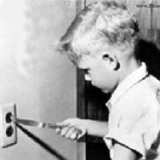- Forum
- Photography and Camera Forum
- Equipment Research, Buying and Using
- Digital Cameras
- from APS-C to full-frame
from APS-C to full-frame
-
 Topic Author
Topic Author
- amatula
- Newbie
- Follower: 1
-
Points:
707
Post #671028
I have had a Canon Rebel SL1 with a 24 mm F2.8 IS lens which I use predominantly for landscape and next, travel.
I love it, but I have thought to upgrade to full-frame so I can capture more shadow areas and more detail.
I have a chance to purchase a used Canon 5D Mark II camera from a camera store where I live for $6oo. It is heavy I acknowledge and older but I do not feel I need the "latest and greatest."
I am thinking too a F2.8 zoom lens in the range of 15 - 85 would be just what I need.
But I am also a travel photographer so don't really want to haul around heavy/bulky gear traveling and hiking and wondering if there are any other options available for full-frame (or mirror).
And because I travel, I don't want to spend the money full the best/most professional cameras (but I would buy high quality used from a camera store).
If you have a camera (any manufacturer!) and lens that you love for travel and landscape (with image stabilization), can you share, along with the lens?
Thank you for your time and happy New Year!
Annie
-

- garyrhook
- Oh Wise One
-
- Nikon D850, Nikon D750, Panasonic G7K
- Followers: 912
- Posts: 11103
-
Points:
67681
Post #671042
You are correct that a larger sensor will help get more detail in the extremes of the dynamic range. But frankly, a used Nikon D700 would be a better choice than the 5D mk II (and both are heavy). And if your budget is modest, your only choice for mirrorless with larger sensors is Sony. Otherwise, you're looking at micro four thirds, where there are a lot of choices there in both bodies and lenses.
You don't need an f/2.8 lens for landscapes, and you hardly need it for travel. f/4 would, with a decent body, get you everything you need, excepting dark environments.
-
 Topic Author
Topic Author
- amatula
- Newbie
- Follower: 1
-
Points:
707
Post #671126
I appreciate the reply.
Out of curiosity, why do you think the Nikon D700 (at 12.1 mp) is a better choice than the D5 Mark II (21 mp)?
I do not mind buying used from a dealer... I get the best of both worlds then: a better camera and a good price
Happy New Year!
Annie
-

- Nikon Shooter
- Oh Wise One
-
- 3S 3X 810 850
- Followers: 197
- Posts: 13795
-
Points:
88932
Post #671130
full-frame and 12 or maybe 24 MP… the argument
of larger pixels still holds the road. My experience.
Light is free… capturing it is not!
-

- garyrhook
- Oh Wise One
-
- Nikon D850, Nikon D750, Panasonic G7K
- Followers: 912
- Posts: 11103
-
Points:
67681
Post #671148
-

- Kenta
- The Lounger
-
- Nikon D810
- Followers: 172
- Posts: 1002
-
Points:
13342
-
 Topic Author
Topic Author
- amatula
- Newbie
- Follower: 1
-
Points:
707
Post #672237
That's very interesting that you mentioned that! I had also been considering a used Nikon D610 that a local photography store has and just surfed for more info on the D700. I also looked at a used Canon 5D Mark II.
Hoping I can demo a few.
Thanks again!
Annie
-

- 7Wishes
- New Kid On The Block
-
- Canon EOS 5D Mark IV and Canon EOS M5
- Followers: 61
- Posts: 49
-
Points:
3379
Post #680511
-

- TCav
- The Lounger
-
- Nikon D7200. Sony A77 II. Pentax KP.
- Followers: 85
- Posts: 1036
-
Points:
31349
Post #708409
A larger image sensor provides a more shallow Depth of Field for images with the same perspective. For instance, a 'Full Frame' body with a 105mm lens and an 'APS-C' body with a 70mm lens, will produce almost identical images with almost identical perspectives. But with an aperture of f/2.8 and a subject distance of 10 feet, the 'Full Frame' body will get a total DoF of 0.45 feet while the 'APS-C' body will get a total DoF of 0.69 feet, which is about what the 'Full Frame' body would get with an aperture of f/4.0. If the 'Full Frame' body was using a 24-70/2.8 lens and the 'APS-C' body was using a 17-50/2.8 lens, they would both be capable of almost identical images, but with an aperture of f/2.8 and a subject distance of 7 feet, the 'Full Frame' body would have a DoF of 0.5 feet and the 'APS-C' body would have a DoF of 0.66 feet, about what the 'Full Frame' body would get with an aperture of f/4.0. And if the 'Full Frame' body was using a 70-300 lens and the 'APS-C' body was using a 55-200 lens, they could both produce nearly identical images, but at f/5.6 and a subject distance of 100 feet, the 'Full Frame' body produces a DoF of 11.4 feet, while the 'APS-C' body produces a DoF of 17.3 feet, about what the 'Full Frame' body would get using an aperture of f/8.0. So the difference in Depth of Field is only about a single stop.
A larger sensor performs better than a smaller one, but few attempts have been made to quantify the difference. DxOMark.com performs a series of measurements on many cameras, and publishes the results on its website in such a way that the results from different cameras can be compared. It publishes a lot of "scores" and other values that seem to be actual measurements, but the only two that are direct measurements are for SNR 18% (signal to noise ratio) and Dynamic Range (the luminance range, from brightest to dimmest.)
The results show that, for instance, the level of image noise of Canon's 'APS-C' 7D Mk II is 35.5 dB at an ISO setting of 400, while the 'Full Frame' 6D scores 36.2 dB at ISO 800 and 33.4 dB at ISO 1600. That works out to the 'Full Frame' 6D having about a 1-1/3 stop advantage over the 7D Mk II with respect to noise. Similarly, the dynamic range of the 7D Mk II at ISO 400 is 11.39 Ev, while the 6D scores 11.55 Ev at ISO 800 and 11.12 Ev at ISO 1600, giving a 1-1/2 stop advantage over the 7D Mk II . (See Canon EOS 7D Mark II versus Canon EOS 6D)
Nikon's 'APS-C' D7200 scores a SNR 18% of 33.7 dB and a dynamic range of 11.89 Ev at ISO 800, which gives Nikon's 'Full Frame' D610 a little over a one stop advantage in noise and about 1/3 stop advantage in dynamic range. (See Nikon D7200 versus Nikon D610) In addition, Sony's 'APS-C' A77 Mk II scores 35.6 dB and 11.52 Ev at ISO 400, roughly 1 stop behind Sony's 'Full Frame' A99, in both measurements. (See Sony SLT Alpha 77 II versus Sony SLT Alpha 99) So there is certainly a promise of improved image quality with larger image sensors.
One of the advantages of 'APS-C' bodies over 'Full Frame' bodies, though, is the abundance of lenses, both 'Full Frame' and 'APS-C only' ('EF-S', 'DX', 'DT', 'DA', 'DC', 'Di-II'), and one of the disadvantages 'Full Frame' bodies have, when compared to 'APS-C' bodies, is that many 'Full Frame' lenses exhibit additional vignetting, distortion, transverse chromatic aberration and/or field curvature that don't appear when those same lenses are mounted on 'APS-C' bodies.
So while a 'Full Frame' body may be capable of better image quality, the lenses may have trouble delivering it.
It's your call, of course, but the advantages are not nearly as great as I've heard some say, and I think you should know exactly what you'd be getting yourself into. If you need the slightly more shallow DoF, the slightly lower noise, and/or the slightly greater dynamic range, and you can find an appropriate lens or lenses from the limited selection, to give you the results you want, I hope it works out well for you.
But there's very little you can't do with a smaller, lighter, cheaper 'APS-C' kit.
- Forum
- Photography and Camera Forum
- Equipment Research, Buying and Using
- Digital Cameras
- from APS-C to full-frame
Latest Reviews
The Olympus Pen E-P7 is an affordable micro four thirds mirrorless camera with 4K video capabilities, a 20.3MP sensor, and 121 focus points, making it a solid entry-level camera for beginners.
The Panasonic G9 II is a 25.2-megapixel micro four thirds camera with numerous features that make it punch out of its weight class, like 779 AF points, 5.8K video, and weather sealing.
The Fujifilm XT5 is a 40MP mirrorless camera capable of 6.2K video at 30p. With those specs, it’s an ideal choice for photographers needing a camera to pull double duty for imaging and video.
The Canon EOS R100 is an entry-level mirrorless camera introduced in 2023. But just because it’s an entry-level camera doesn’t mean it’s a bare-bones camera. Find out why in this review!
Latest Articles
Upgrade your kit in 2024 with the best intermediate camera on the market! The question is, what camera fits the bill? We’ve got three top options for you to choose from in this buyer’s guide.
The best photography jobs right now are a mix of tried-and-true gigs like wedding photography and new jobs highlighting AI’s capabilities, travel, and videography.
The Olympus Pen E-P7 is an affordable micro four thirds mirrorless camera with 4K video capabilities, a 20.3MP sensor, and 121 focus points, making it a solid entry-level camera for beginners.
Starting a photography business is one thing; sustaining your business over a long period of time is another. Use the tips in this professional photography guide to build something with longevity!
The Panasonic G9 II is a 25.2-megapixel micro four thirds camera with numerous features that make it punch out of its weight class, like 779 AF points, 5.8K video, and weather sealing.
Cinematic photography is an interesting genre that combines photographic and videographic skills along with effective storytelling techniques. The result? Highly impactful images!
Newborn photography requires skill, the right gear, and a lot of patience. This beginner’s guide discusses critical topics that will help you be more prepared for before, during, and after the shoot.
To fill the frame means to expand the footprint of the subject in your shot. Get in close, zoom in, crop the image, or use other techniques to bring the subject to the forefront.

















